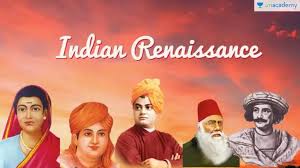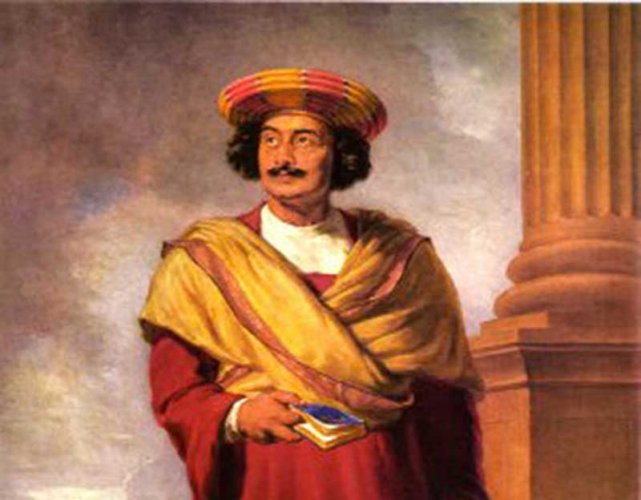Introduction
Sivayogi Brahmananda Swami was a seer and a social reformer from the state of Kerala. He established Ananda Maha Sabha and Anandamatham with the help of others who had similar views. Right from childhood, he was an atheist. Hence, he denounced all forms of idol worship and all forms of religion. According to him, the ultimate aim of the activities of all human beings is to get the Ultimate Bliss or Paramanandam. He was against the segregation of people based on their caste, creed, and color. The movement he spearheaded during the Kerala Renaissance period goes into Kerala’s history as the golden period. His original name was Govindan Kutty.

Early Life
Sivayogi Brahmananda Swami was born as Govindan Kutty on August 26, 1852. He was born into an aristocratic Nair family. His parents were Nani Amma of Karat Nair family and Kunjikrishna Menon of Vellengi Ravanyaram. His birthplace was Nenmara in the Palakkad district of Kerala. As per the custom that was prevalent in the state, Govindan Kutty was staying with his mother Nani Amma and his father used to make occasional visits to him. In the formative years of his life, he was brought up in an orthodox way. In the early morning, he used to take the bath and visit the worship chamber in the house for prayers. As a child, Govindan Kutty was ignorant about the activities undertaken by him at his home. He merely followed the instructions given by the elders in the family. During those times, youths were not expected to raise any objection on the ages-old customs followed at their homes.
Young Govindan Kutty used to watch the rituals and customs with disbelief. His inquisitive mind could not understand the society’s illogical behavior. He asked himself why people are getting divided on color and caste lines when they are made of the same flesh and bone and contain the same blood. This fundamental question was troubling his mind since his childhood. He started to think about the rationality of these customs. After thinking about this over some time, he realized that there was no rationality behind following such customs and rituals. This realization was the starting point of the rationalist in him. His conviction became a steely resolve after he gained requisite knowledge.
Education and Realization
Govindan Kutty got initiated into the world of letters by a home tutor. After learning the alphabet of languages, he went to a nearby primary school to get a quality education. When he passed the primary school, he was sent to Padmanabha Sastri who was a reputed scholar in Sanskrit in the region to learn basics of that language. During this period, Govindan Kutty started to write simple and meaningful poems in the Sanskrit language. Due to this ability, he became an instant hit among fellow students. Under the same guru, he learned Sanskrit Kavyas. In light of the knowledge gained by him, young Govindan Kutty started questioning the logic of each and everything around him. By constantly assimilating information from various sources, he also became well-versed in Hindu scriptures and Tamil language. This also helped him to independently analyze the different dimensions of society.
After learning about Govindan Kutty’s ability to study well, his father sent him to a Ernakulam-based English medium high school. This decision by his father was a turning point in his life. By interacting with various people there, he became acquainted with other religions as well. This forced him to objectively compare the tenets of Hinduism with those of other religions. After learning the basics of the English language, Govindan Kutty decided to stop learning that language and concentrated on the subject of Philosophy. Soon he found himself among the fat books of the Vedas, Puranas, Upanishads, Smritis, Sutras, Gita, etc. Due to this move, he soon found the answers he was looking for. To his astonishment, he learned that the concept of God is non-qualitative, and therefore the idol worship was not solicited.

The stint at Brahma Samaj
After gaining proper knowledge in the Sanskrit language, Govindan Kutty decided to pass the knowledge he gained to young men in his locality. In this role, he continued for a while. Later, he joined in a Kozhikode-based Native School as a Sanskrit teacher. While working in Kozhikode, he could interact with learned persons who had similar views. During this period, he established a branch of Brahma Samaj in Kozhikode. The learned members of the Samaj gave him the title of Brahmananda Swami after they learned about his stack of knowledge in Philosophy, Logics and Sanskrit language. Govindan Kutty began to practice Rajayoga in the premises of this organization. His association with this organization helped him to widen the horizon of his knowledge. Role as a Social Reformer
After getting the title of Brahmanda Swami, Govindan Kutty decided to renounce the worldly life. For this purpose, he sought the permission of his wife. After getting his spouse’s permission, he took the Brahmacharyam vow and moved to his hometown to establish an ashram. In his hometown, he took up the job of a Sanskrit teacher in the Alathur Board School. In that school, he was known as Brahmananda Swami. Due to his free-thinking, he got a long list of disciples. To teach his disciples, he opened an ashram at Vanoor in the Palakkad district of Kerala. He named his ashram as Venoor Sidhasramam. In his organization, he spoke against the practice of animal sacrifices. The orthodox people in the society dubbed him as a rationalist. On the other hand, the learned people regarded him as a revolutionary. In truth, he was neither. Instead, he was a free-thinking social scientist who was searching for the truth.
Role as a Religious Reformer
As his popularity grew, Govindan Kutty decided to shift his ashram to Alathur in the same district. Due to this, people began to visit his ashram in large numbers. For the benefit of the people visiting the ashram, he began to give discourses on various religious topics and the truths he found about them. After hearing the discourses, the people began to recognize the difference between the religion taught by him and that taught by the priests in their neighborhood. When the people started to learn more about the truth in the religion, they began to appreciate the works of this great saint. Due to this, Govindan Kutty’s popularity increased and more people from different parts of the state started to visit him. They left the organization premises happily after getting enlightened about the nature of the true religion.
Through his contact classes at the ashram, Govindan Kutty wanted to tell his disciples that the mind controls every aspect of a person’s life. Without its control, a person’s life would become miserable. In the year 1905, he stopped teaching his disciples and devoted his full-time to the cause of Rajayoga. In connection with this, Govindan Kutty gave his first speech at Kozhikode in 1910 and the second one at Guruvayoor in 1912. Both the speeches attracted learned persons’ attention and drew the flak from the orthodox members of the society. Despite the protests from a section of the society, he repeatedly told the people that all religions need to be rebuilt scientifically. He also advised the women to equip themselves through education and fight against the odds that discriminate them. He told women not to get disheartened by the step-motherly attitudes of society.
Literary Career
Govindan Kutty explained his ideas with the help of suitable examples and proofs in his books, speeches, meetings, and letters and advice. His literary career spanned for 35 years. During this period, he wrote 13 books and all these books were having good and meaningful content. His masterpiece was Mokshapradeepam. This work was a huge hit in the market. Due to huge demand, he could sell thousands of copies of Mokshapradeepam in different parts of Kerala. Some of his works got even translated to English and Hindi languages to cater to the demand of people from North India and abroad.
Conclusion
Brahmananda Swami Sivayogi was a saint, a social reformer and a rationalist from Kerala. He studied Logics and Philosophy to compare the tenets of different religions to find the eternal truth. After having found the truth, he started to pass it through religious discourses, seminars, letters, and books. Through his words of wisdom, Govindan Kutty enlightened his disciples with the real truth in the world. He called this truth as Eternal Bliss or Paramanandam. He advised the women to educate themselves to fight against the society that discriminated against them. He also spoke against the animal sacrifices and regarded these practices as inhuman.






You must be logged in to post a comment.